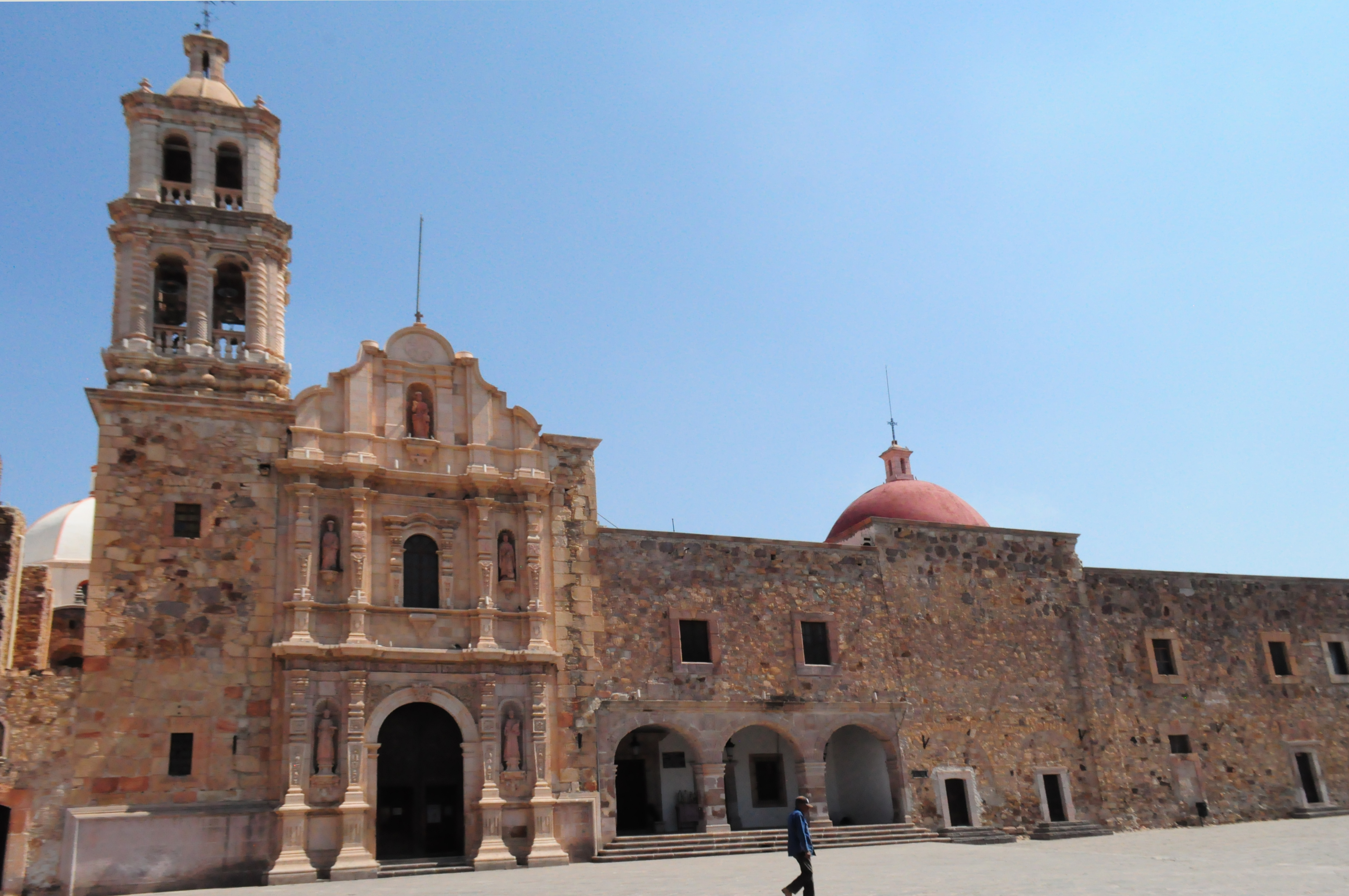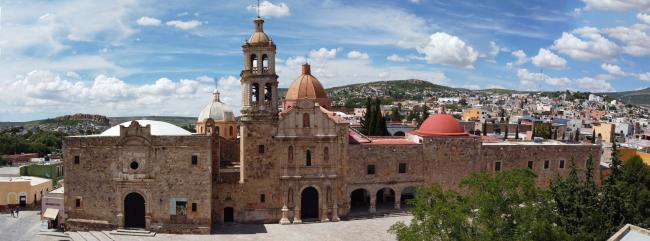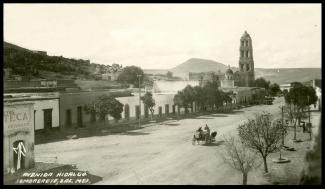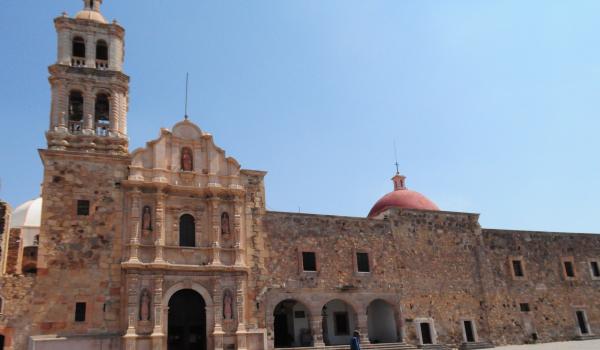Conjunto histórico de la ciudad de Sombrerete
Route element
Conjunto histórico de la ciudad de Sombrerete
In 1555, Juan de Tolosa, along with a group of Spanish adventurers, Franciscan friars, and indigenous people from central Mexico, founded the Real y Minas de Sombrerete in Zacatecas, a region that was previously inhabited by pre-Hispanic groups belonging to the Chalchihuites culture.
According to popular tradition, it was the Franciscan friar Jerónimo de Mendoza who named the place Sombrerete, due to the resemblance of a nearby hill to the hats worn by the Spaniards. In this area, the Spaniards discovered significant silver deposits, which made it a mandatory stop on the Camino Real de Tierra Adentro route for travelers journeying between Zacatecas and Durango. In 1570, it was named Villa de San Juan Bautista de Llerena Real y Minas de Sombrerete de Pabellón y Vetanegra, which was later simplified to Villa de Llerena.
Sombrerete came to play a prominent role in the mining development of the Viceroyalty of New Galicia, having a Royal Treasury and, during times of prosperity, even rivaling the mines of Zacatecas and Parral. For this reason, the German explorer Alexander von Humboldt praised the wealth of the Sombrerete mines.
The mining prosperity of Sombrerete favored the construction of excellent examples of religious architecture from the colonial period, such as the parish of San Juan Bautista de Sombrerete, built around 1685 with contributions from the miner Francisco Costilla.
The sanctuary of the Virgin of Solitude was built in 1740, next to the temple of Vera Cruz. Due to its craftsmanship, a connection can be inferred with the façade of the parish of Zacatecas and the first levels of the side façades of the cathedral of Durango, built around the same time.
The convent and temple of San Mateo form a harmonious architectural ensemble with the chapel of the Third Order, which, situated in front of a plaza, also preserve a burial crypt. On the other hand, the temple of Santo Domingo is the northernmost foundation of the Dominicans in New Spain, with construction beginning in 1735. The chapel of La Candelaria corresponds to an indigenous neighborhood, managed by the Franciscans of the San Mateo convent; inside is the image of the Virgin of La Candelaria, which is attributed to having a Sevillian origin and is said to have been gifted by Juan de Tolosa in 1556. The chapel of Santa Rosa de Lima was the estate of Manuel Ginoesio, who also operated the Sombrerete mines.






